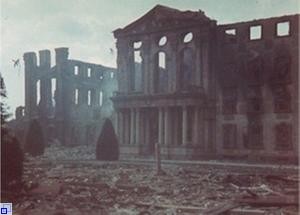History of the city
Bruchsal's rich history dates back to the Stone Age. Archeological digs from the Michaelsberg Hill in Untergrombach confirm the existence of inhabitants as far back as 4400-3500 BC. The term Michelsberger Kulturkreis (Michaelsberg Culture), that refers to an important Neolithic culture in Central Europe, is derived from the digs at the Michaelsberg. In the Middle Ages, Bruchsal became the place of several important historical events among them the issuing of the Ostarrichi Document, signed in 996 at the Bruchsal Royal Court by Emperor Otto III.
In the 17th century large parts of the country were devastated due to the 30-Years War and by the end of the century the city was twice burned down. Just a few decades later, Bruchsal had recovered and, built a gorgeous and spacious Baroque palace complex, which became the residence of the Prince-Bishops of Speyer.
In the 18th century -as mentioned above- the Prince-Bishops of Speyer made Bruchsal their residential city and the gorgeous Baroque Palace, the Belvedere and the Peterskirche (Peter's Church) were developed. For a period of almost one hundred years, the religious town was a busy place of master builders, musicians, artists, and nobles.
In the 19th century things changed. At the beginning of the “European Reorganization“ , initiated by Napoleon Bonaparte, Bruchsal, which had been in the possession of the Prince-Bishops of Speyer, was turned over to the future Grand Duchy of Baden, leaving Bruchsal as a languishing, impoverished town. Things once again changed, however, in 1806 when Amalie, the Margravine of Baden, chose the Bruchsal Palace as one of her homes where she lived until she died in 1832. Her choice of Bruchsal helped rescue the town from impoverishment. She was referred to as the “Mother in Law of Europe” because five of her six daughters were married to reigning European monarchs. Outside Bruchsal’s Local Court, opposite the Palace, is the Amalienbrunnen (Amalie Fountian) is a constant reminder of the Margravine of Baden.
Bruchsal experienced another economic boom in 1843, when the Heidelberg-Bruchsal-Karlsruhe railway was opened. As a result of the railway, more industry was attracted to the region and later, when the automobile was invented, it was accompanied by an increase in traffic and road construction, which helped develop Bruchsal into a transportation hub. The following decades, with the exception
On March 1, 1945, towards the end of World War II, thousands of citizens lost their lives and 80 percent of the buildings in the city were destroyed, during an Allied air attack. Subsequent years were characterized by reconstruction and urban development. The period referred to as “The Economic Miracle” (the years after the reconstruction of post World War II Germany) contributed to significant increases in population so that by 1956 Bruchsal had exceeded 20,000 inhabitants. Further expansion happened at the beginning of the 1970’s, when the local municipalities of Büchenau, Heidelsheim, Helmsheim, Obergrombach and Untergrombach, which had been independent towns until that time, were integrated as urban districts into Bruchsal. Today, with over 43,000 inhabitants Bruchsal continues to grow into an attractive city that offers a variety of cultural, sports and educational opportunities.
